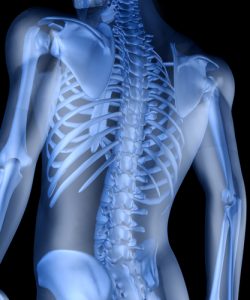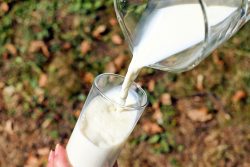Stress and Gray Hair
 Recent research has discovered evidence that supports previous anecdotes that stress can cause hair to go gray. The findings advance the knowledge that stress impacts the human body.
Recent research has discovered evidence that supports previous anecdotes that stress can cause hair to go gray. The findings advance the knowledge that stress impacts the human body.
For the first time researchers at Harvard University have found exactly how the process occurs. In mice, the type of nerve that is involved in the fight or flight response causes permanent damage to the pigment regenerating stem cells found in the hair follicles.
The team wanted to understand if the anecdote that stressful experiences can lead to the phenomenon of hair graying is true. And if this is particularly true in skin and hair which are the only tissues that can be seen from the outside. If the connection is true, then learning how stress leads to changes in diverse tissues may be better understood. Hair pigmentation is a tractable and accessible system to begin with.
Because stress can affect the whole body, the team first had to narrow down which body system is responsible for connecting stress to hair color. They first hypothesized that stress will cause an immune attack on cells that are pigment producing. However, when mice that lacked immune cells still showed hair graying, they then turned to the hormone cortisol. However this also was a dead end.
Stress will elevate cortisol levels in the body so they thought this occurrence might play a role. However, when the team removed the adrenal gland from the mice so they were not able to produce cortisol, their hair still turned gray when under stress.
After eliminating a variety of possibilities, the team honed in on the sympathetic nerve system. This system is responsible for the fight or flight response. These nerves branch out into every hair follicle on the skin. The team discovered that stress caused these nerves to release norepinephrine, a chemical which gets taken up by nearby pigment regenerating stem cells.
Within hair follicles certain stem cells will act as a reservoir of pigment producing cells. As hair regenerates, some of these stem cells convert into pigment producing cells which color the hair.
The team found that the norepinephrine from sympathetic nerves caused the stem cells to activate excessively. These stem cells convert into the pigment producing cells which prematurely deplete the reservoir. After a few days, all of the pigment regenerating stem cells were lost. And once they are gone, they can’t regenerate pigment any longer. The damage is permanent.
These findings underscore the negative side effects of an otherwise protective evolutionary response. Acute stress and particularly fight or flight has been viewed as beneficial to an animal’s survival. However in this case, acute stress causes the permanent depletion of stem cells.
To make the connection of stress and hair graying, the team began with a whole body response and then progressively zeroed into individual organ systems, cell to cell interaction and then all the way down to molecular dynamics. This process required several research tools including methods to manipulate nerves, cell receptors, and organs.
The team also collaborated with many scientists across a wide range of disciplines to go from the highest level to the smallest detail in an effort to solve a very fundamental biological question.
It is known that peripheral neurons powerfully regular blood vessels, organ function and immunity. However, less is known about how they regulate stem cells. With the current study, it is known that neurons can control stem cells and their functions. The team can also explain how they interact at the molecular and cellular level and then link stress to hair graying.
The team’s findings can help illuminate effects stress can have on various tissues and organs. The understanding will help pave the way to new studies that will seek to block or modify the damaging effects stress causes on the human body.
Through understanding exactly how stress affects stem cells which regenerate pigment, the groundwork for understanding exactly how stress affects other organs and tissues in the body can be laid. Understanding how tissues change under stress is the first critical step towards eventual treatments that can revert or halt the damaging impact that stress causes.
To view the original scientific study click below
Hyperactivation of sympathetic nerves drives depletion of melanocyte stem cells.



 With opioid addiction in crises resulting in destroying peoples lives and also resulting in countless deaths, finding non-addictive treatments for pain is the goal of scientists around the world. Pain is real and in Australia alone where the new research has been conducted, it was estimated that the total cost of chronic pain was over $139 billion.
With opioid addiction in crises resulting in destroying peoples lives and also resulting in countless deaths, finding non-addictive treatments for pain is the goal of scientists around the world. Pain is real and in Australia alone where the new research has been conducted, it was estimated that the total cost of chronic pain was over $139 billion. Researchers have developed a new technique for gene therapy by transforming human cells into mass producers of nano sized particles which are full of genetic material. This genetic material has the potential to reverse a variety of disease processes.
Researchers have developed a new technique for gene therapy by transforming human cells into mass producers of nano sized particles which are full of genetic material. This genetic material has the potential to reverse a variety of disease processes. For years 10,000 steps per day has been the target for many people! But there is actually nothing magical about it! The original basis for establishing that number was never based on scientific basis. In fact it was part of a marketing campaign launched in Japan in1965 to help promote a pedometer. And it is a big number that many people find hard to reach!
For years 10,000 steps per day has been the target for many people! But there is actually nothing magical about it! The original basis for establishing that number was never based on scientific basis. In fact it was part of a marketing campaign launched in Japan in1965 to help promote a pedometer. And it is a big number that many people find hard to reach! Researchers at Baylor College of Medicine have revealed a new mechanism that will contribute to adult bone maintenance and repair. This new development opens up the possibility for developing new therapeutic strategies for the improvement of bone healing.
Researchers at Baylor College of Medicine have revealed a new mechanism that will contribute to adult bone maintenance and repair. This new development opens up the possibility for developing new therapeutic strategies for the improvement of bone healing. New research has provided the first evidence that along with pollution, smoking, obesity, and diesel exhaust, oxidative stress acts directly on telomeres to speed up cellular aging. The research has shown how stress can cause our biochemical body clock built into our chromosomes to tick faster.
New research has provided the first evidence that along with pollution, smoking, obesity, and diesel exhaust, oxidative stress acts directly on telomeres to speed up cellular aging. The research has shown how stress can cause our biochemical body clock built into our chromosomes to tick faster.  A study conducted at Brigham Young University by exercise scientists has found that people who consume low fat milk experience several years less biological aging when compared to those who drink high fat milk, both 2% and whole milk. This supports existing dietary guidelines which do not recommend high fat milk as part of a healthy diet.
A study conducted at Brigham Young University by exercise scientists has found that people who consume low fat milk experience several years less biological aging when compared to those who drink high fat milk, both 2% and whole milk. This supports existing dietary guidelines which do not recommend high fat milk as part of a healthy diet.  Scientists have identified pathways that could enable humans to live for well over 100 healthy years according to one of the scientists who participated in the research. The synergistic cellular pathways for longevity that increase the lifespan five fold were discovered in C. elegans which are a nematode worm used as models in aging research. This translates to extending human lifespan by about 50%.
Scientists have identified pathways that could enable humans to live for well over 100 healthy years according to one of the scientists who participated in the research. The synergistic cellular pathways for longevity that increase the lifespan five fold were discovered in C. elegans which are a nematode worm used as models in aging research. This translates to extending human lifespan by about 50%. New research has revealed how a high level of exercise can slow one type of aging. This is the kind of aging that occurs within our cells. We just have to be willing to put in some sweat equity!
New research has revealed how a high level of exercise can slow one type of aging. This is the kind of aging that occurs within our cells. We just have to be willing to put in some sweat equity! Due to the buildup of scar tissue from a variety of tendon injuries such as jumper’s knee and rotator cuffs, secondary tendon ruptures along with painful and challenging recoveries can occur. New research has shown that the existence of stem cells in tendons can potentially be harnessed to not only improve the healing of tendons but also even avoid surgery.
Due to the buildup of scar tissue from a variety of tendon injuries such as jumper’s knee and rotator cuffs, secondary tendon ruptures along with painful and challenging recoveries can occur. New research has shown that the existence of stem cells in tendons can potentially be harnessed to not only improve the healing of tendons but also even avoid surgery.